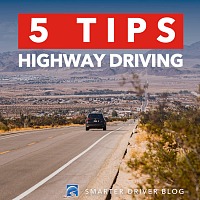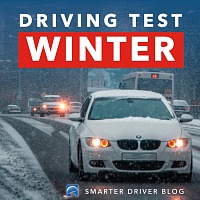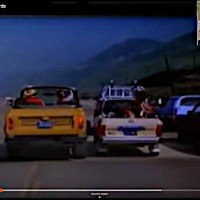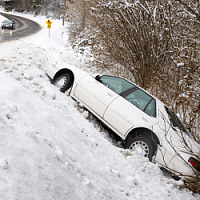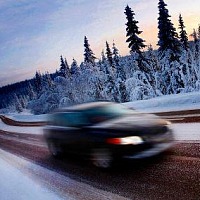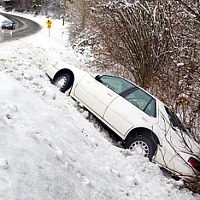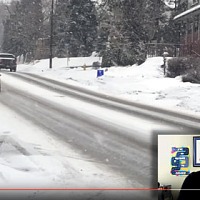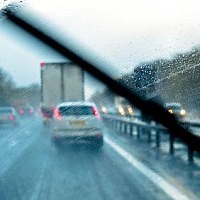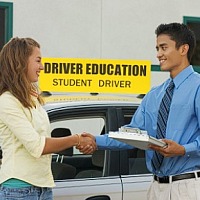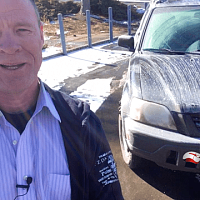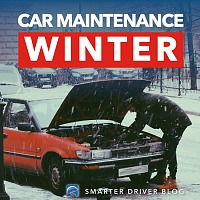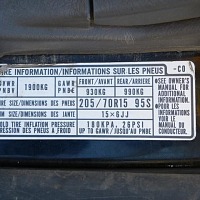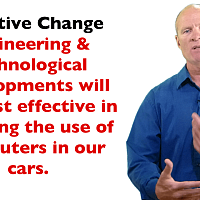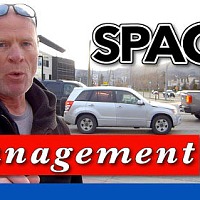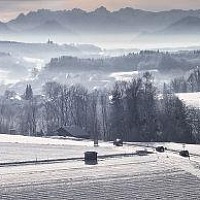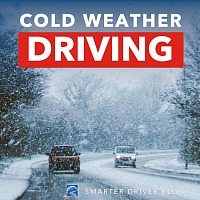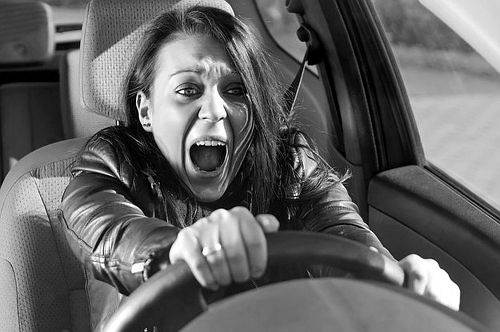Learn how to become a safer, smarter driver with these strategies.
5 Defensive Driving Strategies To Become A Safer, Smarter Driver
Closed Caption
Introduction
- What is defensive driving?
Is it that I'm a good driver?
Because most drivers would agree with that statement regardless of where they live in the world, religion or politics.
Stick around, we're going to give you five defensive driving techniques that will make you a safer, smarter driver.
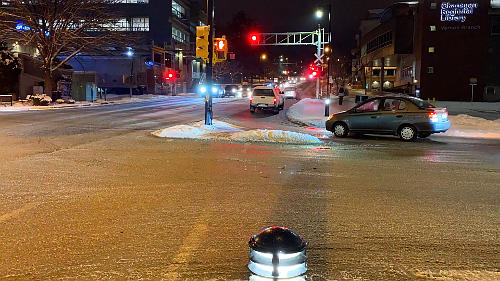 What is defensive driving? Is it simply that drivers agree with the statement: "I'm a good driver!" OR is it something more?Is it that most drivers would agree with the statement "I'm a good driver!" OR is it something else?
What is defensive driving? Is it simply that drivers agree with the statement: "I'm a good driver!" OR is it something more?Is it that most drivers would agree with the statement "I'm a good driver!" OR is it something else?
SPACE MANAGEMENT
If you're not near anything, it's less likely that you're going to hit something.
The most important element of defensive driving is space management.
You need to manage space around your vehicle, to the sides, to the rear, and to the front.
And you can always, always manage space in front of your vehicle.
And I know there's drivers out there that will say to me:
"Oh, if I leave space in front, drivers will cut in."
Yes, they will, but if they're cutting in, they're going faster than you, and they will only be there for a couple of seconds and then you can reclaim your space.
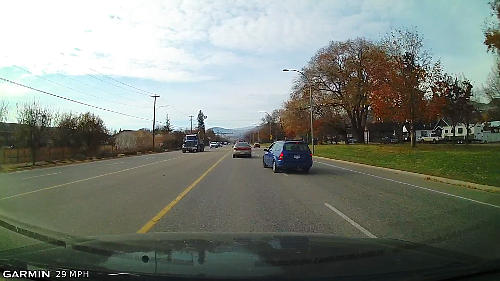 You can always, always control the space in front of your vehicle to greatly reduce your chances of crashing.Always, always manage space in front of your vehicle, have your two to three-second following distance behind other traffic.
You can always, always control the space in front of your vehicle to greatly reduce your chances of crashing.Always, always manage space in front of your vehicle, have your two to three-second following distance behind other traffic.
And when you're stopped in traffic, always stop so you can see the tires making clear contact with the pavement.
And when you're moving slowly in a queue, again, also never get closer to the vehicle in front of you so that, at all times, you can see the tires of the vehicle in front of you making clear contact with the pavement.
If you manage space well, you are rarely going to get into trouble when you're driving.
It is the most critical skill that you can have as a defensive driver, because the speed is going to take care of itself.
It's like right now, I have a two to three-second following distance in front of me behind this truck, and I'm simply doing 50 kilometers an hour which is the posted speed limit, or 30 miles an hour for those of you in the States.
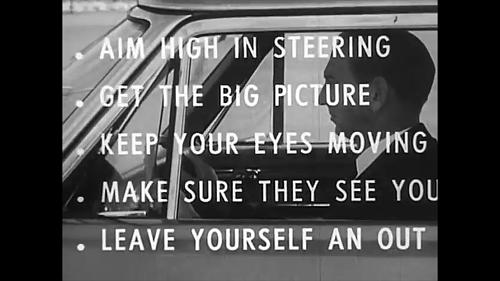 The Smith space cushion system was developed in the 1940s by Harold Smith but is outdated owing to the amount of traffic now on our roads.
The Smith space cushion system was developed in the 1940s by Harold Smith but is outdated owing to the amount of traffic now on our roads.
Smith Space Cushion System
The Smith Space Cushion System developed and founded in the 1940s by Harold Smith.
Smith indicated that if you manage space, you have a place to drive into if you get into an emergency situation.
Because it's faster to drive out of an emergency situation than it is to brake.
However, roads are much, much busier than they were in the 1940s when Smith founded that system.
So it's now more important that you manage space in front of your vehicle so that you can come to a stop and not get into trouble in case something happens in front of you.
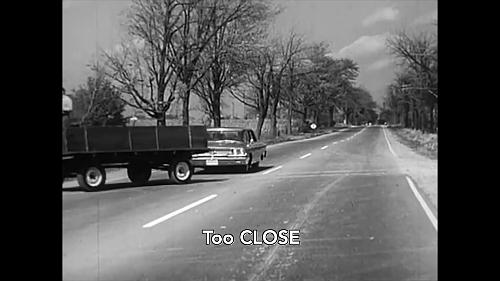 Space management is the most critical element of defensive driving. Here the car is too close to the farm equipment.The definition of defensive driving is is that you are making allowances, you have skills and strategies in place that are compensating for the errors of other drivers.
Space management is the most critical element of defensive driving. Here the car is too close to the farm equipment.The definition of defensive driving is is that you are making allowances, you have skills and strategies in place that are compensating for the errors of other drivers.
And also for when you make mistakes because we all make mistakes when we're driving, we lose attention, we get distracted by something on the side of the road or we're looking at something or whatnot.
That's why it is so important to manage space around your vehicle, to allow for the mistakes of other people and for your own mistakes that you may make when you're driving.
So the most important element of defensive driving is managing space around your vehicle.
SITUATIONAL AWARENESS & Defensive Driving
Tip number two is situational awareness.
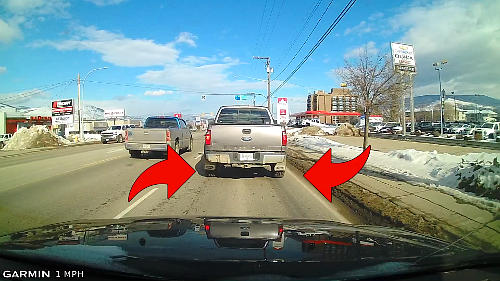 When stopped in traffic, always be able to see the tires of the vehicle in front making clear contact with the pavement. That's approximately one vehicle length.• Where am I?
When stopped in traffic, always be able to see the tires of the vehicle in front making clear contact with the pavement. That's approximately one vehicle length.• Where am I?
• What is it?
• Who is it?
• What's the weather outside doing?
• What's the outside temperature?
• Where am I at the intersection?
I have to do a little jig-jog here 'cause I can't see past the traffic, there we go.
So situational awareness, being aware of what's around you, being aware of intersections, pedestrians right here at the intersection, I was slowing down and backing off for them.
I've got somebody stopped here at an alleyway.
So there's a lot going on and you need to be aware of everything that's going on.
And of course this vehicle in front of me didn't have the signal on, but was waiting to turn into the alley, I didn't know that, but I stay back, I relax, I don't get too close.
 Drivers doing unpredictable things on the road is as predictable as the fact that tomorrow we're going to have weather.Again, even if that vehicle stopped mid-block, I still stop back so I can see the tires making clear contact with the payment.
Drivers doing unpredictable things on the road is as predictable as the fact that tomorrow we're going to have weather.Again, even if that vehicle stopped mid-block, I still stop back so I can see the tires making clear contact with the payment.
That way I'm far enough away that I'm less likely to hit something.
So it's observation, but it's more than seeing, it's being aware of what's going on as you're moving through the intersections.
MIT - MAPPING INTERSECTIONS & TRACKING
Tip number three is what I call MIT, mapping an intersection and tracking what's going on at the intersection.
 Scanning intersections is important to locate and track road users that are going to cross your path of travel.This dovetails well with situational awareness.
Scanning intersections is important to locate and track road users that are going to cross your path of travel.This dovetails well with situational awareness.
So I'm tracking, I've mapped the intersection.
It's a complex intersection with left-hand turning lanes, advance lights, slip lanes, pedestrians, cyclists.
I got a cyclist over here, even in the wintertime we have cyclists riding around, so you have to be aware of that.
The pedestrian's gone, way up the sidewalk.
Cross traffic is going through.
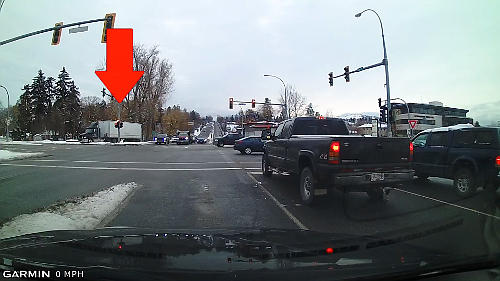 If you're turning left at an intersection, you must track right-turning vehicles on the other side of the intersection.Traffic has stopped, there's nobody behind me.
If you're turning left at an intersection, you must track right-turning vehicles on the other side of the intersection.Traffic has stopped, there's nobody behind me.
So I'm watching traffic coming up behind me at the intersection.
Slip lane over there, I have a truck turning right, and I'm turning left.
So I'm watching and I'm tracking that truck.
The truck is gone.
I've got my advance green.
So checking here, there's nothing here, there's no pedestrians.
I'm tracking that car over there because it's turning right.
 Even in the winter, there may be cyclists vying for road space at intersections and along the road.And of course the car is going to turn right in beside me.
Even in the winter, there may be cyclists vying for road space at intersections and along the road.And of course the car is going to turn right in beside me.
So I was tracking that vehicle as I was coming around the corner through the intersection and making a left-hand turn.
Same thing here, I'm tracking the red car, moving up, the car's coming to a stop, pedestrian over here on my left, vehicles coming through, I'm stopping behind the stop line.
The pedestrian is gone.
Traffic is coming through.
I cannot see what's going on over there because there's a truck sitting beside me as you can see in the dash cam.
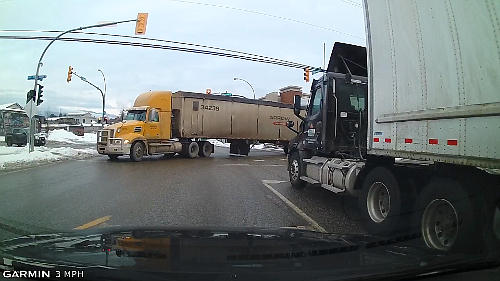 Large vehicles will limit your vision at intersections. Creep out until you can see. When you're certain it's clear...only then do you go.Vehicle on the other side of the intersection, pedestrian coming through the intersection, I'm tracking that pedestrian to figure out where that pedestrian is going.
Large vehicles will limit your vision at intersections. Creep out until you can see. When you're certain it's clear...only then do you go.Vehicle on the other side of the intersection, pedestrian coming through the intersection, I'm tracking that pedestrian to figure out where that pedestrian is going.
MIT, mapping the intersection and tracking the road users around at the different sections of the intersection.
Especially those that are crossing your path of travel as you're going to move left through the intersection.
So, clear, the pedestrian is gone.
The vehicle has come through.
I'm clear to go, shoulder check, and proceed through on the left-hand turn.
Vehicles coming through, there's no road users at the intersection so I'm clear to go.
 Never enter an intersection you can't clear before the light turns to yellow and red. And it's more important in a larger vehicle.I don't have to slow down, I just have to map and track the intersect.
Never enter an intersection you can't clear before the light turns to yellow and red. And it's more important in a larger vehicle.I don't have to slow down, I just have to map and track the intersect.
Remember, it's important to locate the intersection, map the intersection, and track the road users that are at the intersection.
Especially those road users that are going to cross your path of travel because 40% of crashes occur at intersections.
Parking Lots
I always have to park 400 miles away from the shop!
Tip number four, parking lots.
 Parking lots can be busy, especially during the holidays. Go slow and track pedestrians walking amongst the vehicles.If you can find a space which you can drive through into the next space so that you can drive out when you're leaving the parking lot, that is ideal.
Parking lots can be busy, especially during the holidays. Go slow and track pedestrians walking amongst the vehicles.If you can find a space which you can drive through into the next space so that you can drive out when you're leaving the parking lot, that is ideal.
In parking lots, be sure that you go slow because there's lots of activity going on, especially this time of year with the holiday season and whatnot, track pedestrians, figure out where pedestrians are.
If you're the least bit unsure, simply stop and wait for them to pass your vehicle.
When backing out in a parking lot, be sure that you look first out the rear window before you move the vehicle, check your mirrors, check your backup camera if you have one, but make sure that you're looking out the back window before you put the vehicle in motion.
Most bingles, smashes and bashes happen in parking lots because people put the vehicle in motion and then they look, and by then it's too late.
ATTITUDE
Check Yourself Before You Wreck Yourself
Tip number five, and probably the most important tip, check yourself before you wreck yourself.
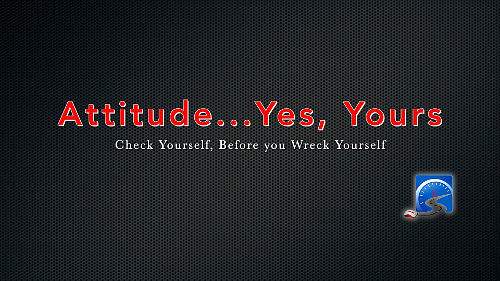 No matter where we live, no matter our religion, no matter our politics, most drivers will agree with the statement: "I'm a good driver!"You have to have an attitude of defensive driving that, "I'm just going to let them go and have their crash somewhere else."
No matter where we live, no matter our religion, no matter our politics, most drivers will agree with the statement: "I'm a good driver!"You have to have an attitude of defensive driving that, "I'm just going to let them go and have their crash somewhere else."
Because people are going to cut you off.
There's going to be drunk drivers, there's going to be poor drivers, there's going to be bad weather.
All of these things are going to happen when you're driving.
They're not unpredictable.
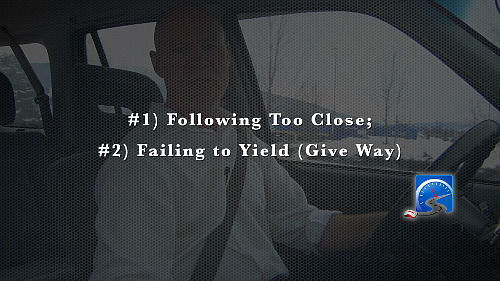 The two biggest contributing drivers' actions that cause traffic crashes are failing to yield and following too close.They are as predictable as that tomorrow we are going to get weather.
The two biggest contributing drivers' actions that cause traffic crashes are failing to yield and following too close.They are as predictable as that tomorrow we are going to get weather.
Because the top two reasons for traffic crashes are failing to yield and following too close.
Those two driving actions, failing to yield, failing to give way, and following too close, are simply attitudes about driving, it's your attitude towards driving.
And if you want to see the perfect film about Mr. Wheeler and Mr. Walker, a Disney character in the 1950s, that was about the very nature of the Jekyll and Hyde character that we become when we drive.
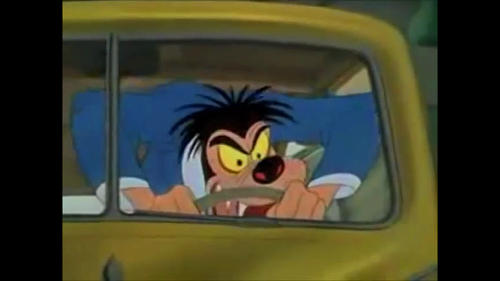 Mr Wheeler is a 1950s Disney character that personifies the transformation that drivers undergo when they get behind the wheel of their motor-vehicle. Have a look at that up in the corner, I'll put a card up there for you, they become this crazy creature, which is crazy, they follow too close, they fail to give the right of way and they believe that they have the right to go.
Mr Wheeler is a 1950s Disney character that personifies the transformation that drivers undergo when they get behind the wheel of their motor-vehicle. Have a look at that up in the corner, I'll put a card up there for you, they become this crazy creature, which is crazy, they follow too close, they fail to give the right of way and they believe that they have the right to go.
For another video, click here to subscribe, click here.
And remember, pick the best answer, not necessarily the right answer.
Have a great day, bye now
OUTAKE FROM MOTOR MANIA
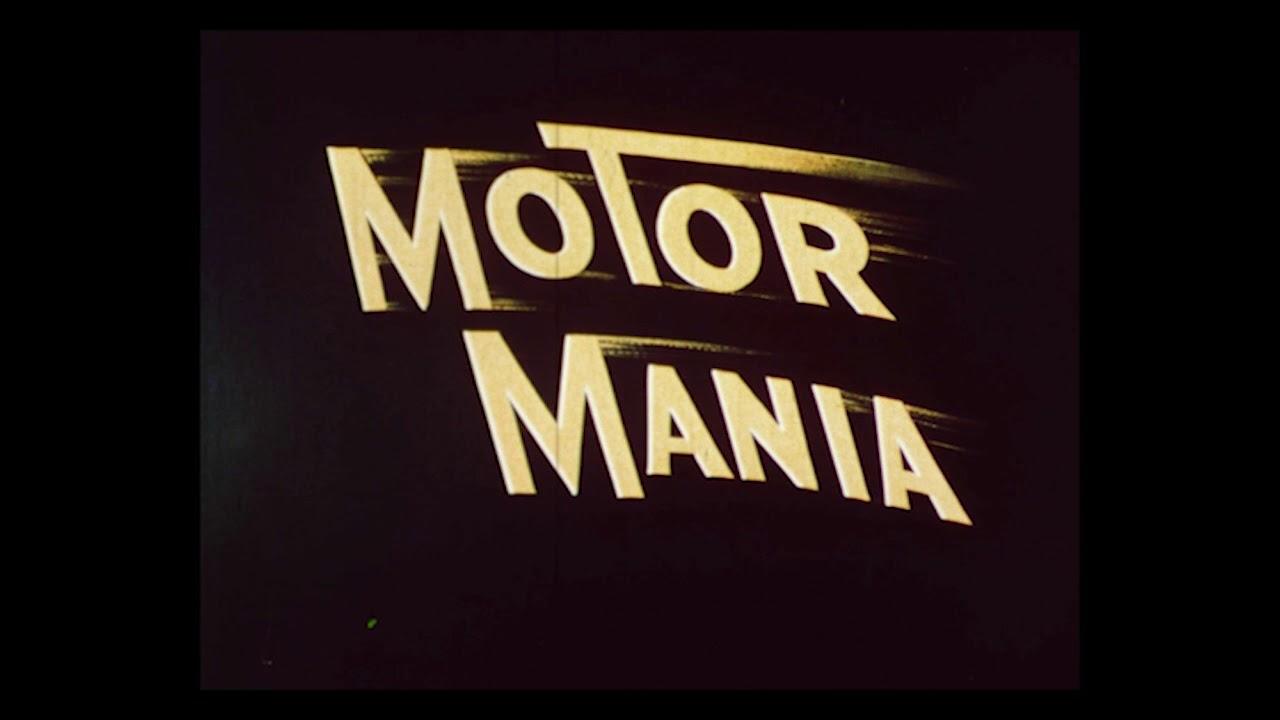 Disney's Motor Mania is a 1950s animated film that shows the Jekyll & Hyde transformation people when they get behind the wheel and become drivers.- [Narrator] Mr. Walker owns a motor car and considers himself good driver.
Disney's Motor Mania is a 1950s animated film that shows the Jekyll & Hyde transformation people when they get behind the wheel and become drivers.- [Narrator] Mr. Walker owns a motor car and considers himself good driver.
But once behind the wheel, a strange phenomenon takes place.
Mr. Walker is charged with an overwhelming sense of power.
His whole personality changes.
Abruptly he becomes an uncontrollable monster, a demon driver.
Mr. Walker is now Mr. Wheeler.

